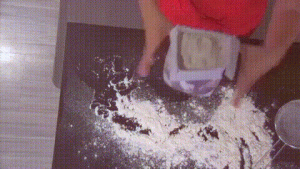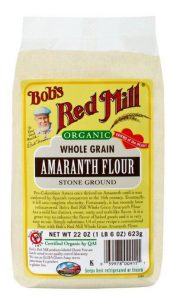Consumers do not consider flour, a low-moisture food product, a high risk for microbial contamination. In the past 10 years, however, flour has been identified as a source of pathogenic bacteria, including Salmonella and Escherichia coli.
 Online surveys were conducted to study consumers’ flour handling practices and knowledge about food safety risks related to flour. The survey also evaluated message impact on three food safety messages in communicating information and convincing consumers to adopt safe flour handling practices. Flour-using consumers (n ¼ 1,045) from the United States reported they used flour to make cakes, cookies, and bread. Most consumers stored flour in sealed containers. Less than 1% kept a record of product identification numbers, such as lot numbers, and less than 11% kept brand and use-by date information. Many consumers (85%) were unaware of flour recalls, or outbreaks, and few (17%) believed they would be affected by flour recalls or outbreaks. If the recall affected the flour they bought, nearly half of the consumers (47%) would buy the same product from a different brand for a few months before they returned to the recalled brand. Among consumers who use flour to bake, 66% said they ate raw cookie dough or batter. Raw dough “eaters” were more difficult to convince to avoid eating and playing with raw flour than “noneaters.” Food safety messages were less impactful on those raw dough eaters than noneaters. Compared with the food safety message with only recommendations, those messages with recommendations and an explanation as to the benefits of the practice were more effective in convincing consumers to change their practices. These findings provide insight into effective consumer education about safe flour handling practices and could assist in the accurate development of risk assessment models related to flour handling.
Online surveys were conducted to study consumers’ flour handling practices and knowledge about food safety risks related to flour. The survey also evaluated message impact on three food safety messages in communicating information and convincing consumers to adopt safe flour handling practices. Flour-using consumers (n ¼ 1,045) from the United States reported they used flour to make cakes, cookies, and bread. Most consumers stored flour in sealed containers. Less than 1% kept a record of product identification numbers, such as lot numbers, and less than 11% kept brand and use-by date information. Many consumers (85%) were unaware of flour recalls, or outbreaks, and few (17%) believed they would be affected by flour recalls or outbreaks. If the recall affected the flour they bought, nearly half of the consumers (47%) would buy the same product from a different brand for a few months before they returned to the recalled brand. Among consumers who use flour to bake, 66% said they ate raw cookie dough or batter. Raw dough “eaters” were more difficult to convince to avoid eating and playing with raw flour than “noneaters.” Food safety messages were less impactful on those raw dough eaters than noneaters. Compared with the food safety message with only recommendations, those messages with recommendations and an explanation as to the benefits of the practice were more effective in convincing consumers to change their practices. These findings provide insight into effective consumer education about safe flour handling practices and could assist in the accurate development of risk assessment models related to flour handling.
Consumer knowledge and behaviors regarding food risks associated with wheat flour, 2021
Journal of Food Protection, vol. 84 no. 4
YAOHUA FENG* AND JUAN C. ARCHILA-GODÍNEZ














